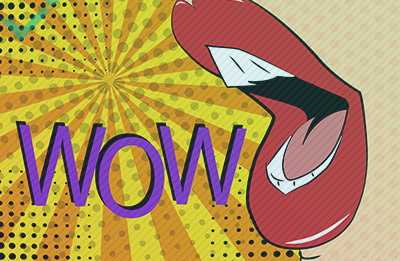Using hashtags is a surefire way to grab attention on social media platforms such as Twitter and Instagram. However, not all attention is good attention! One misplaced letter—along with the lack of spaces and punctuation—can result in embarrassing blunders that your customers won’t forget anytime soon. If corporate giants and renowned celebrities can make these hilarious errors, then small startups and e-commerce businesses aren’t safe either! Check out these six hashtag howlers to learn what mistakes to avoid!
1: CLARITY IS EVERYTHING
McDonald’s decided to launch a social media campaign back in 2012 to make their supply chain more transparent. In an attempt to dispel circulating rumours, the fast-food company wanted to bring its customers closer to their food. They took to Twitter and deployed the hashtags #meetthefarmers and #McDstories to kindle the conversation. The former hashtag went down a treat, but the latter backfired… heavily. Mischievous customers took to the Twittersphere to detail their own #McDstories—particularly times when they got sick from the food!
This social media mistake is a great example of the negative impact of ambiguous hashtags! Keep yours clear to prevent the trolls from emerging from under their bridges.
2: CARVE YOUR OWN PATH
British furniture firm Habitat got caught red-handed using completely unrelated hashtags in a scramble for attention. Their hashtags of choice should have probably fallen somewhere close to #comfort, #relax, or #destress. Instead, the company published tweets with trending hashtags such as #KOBE and #TRUEBLOOD. It didn’t take long for their followers to call them out on such a cheeky move.
The lesson here? Use hashtags that are directly relevant to your company and content! Tagging unrelated terms—trending or not—appears lazy and sneaky. Act with integrity to earn the respect of your customer base.

3: Q&A: ONLY IF YOU HAVE NOTHING TO HIDE
Moral and ethical companies can happily conduct social media Q&As using hashtags on Twitter and Instagram. However, if you have skeletons in your closet, expect them to be exposed. This is precisely what happened to American investment bank JPMorgan Chase. The financial institution attempted to win some brownie points from their followers with the hashtag #AskJPM. However, their social media team thought this would be a great idea while JPMorgan was in the middle of a government investigation. The Twitterati unleashed their outrage, and the hashtag was pulled a mere six hours after its launch.
Small startups and e-commerce businesses have nothing to worry about here. Holding a social media Q&A can be a great way to open up to your customers and win over their trust. The moral of the story here is: Act with honesty!
4: WHEN WORDS COLLIDE
Hashtags don’t feature spaces between words. The lack of distance isn’t a problem in shorter tags, though it can cause utter embarrassment when longer phrases are used. Britain’s Got Talent star Susan Boyle found this out the hard way. In an attempt to promote her new album, she decided to do a launch party. To make sure the event would take place under the limelight, she started the hashtag #susanalbumparty. Need we say more?
There’s a strong takeaway from this blunder. Proofread everything, from blog posts to hashtags!
5: RESEARCH BEFORE YOU POST
Warburtons sent their hashtag-hunting customers down a strange Instagram rabbit hole. The British bread company prompted customers to use the hashtag #CrumpetCreations to display how they like to eat their crumpets (a small, savoury cake). Little did they know, the hashtag was already in use by a community known as Furries. The group dresses head-to-toe as anthropomorphised animals, often engaging in intimate acts. Needless to say, many Warburton customers experienced a moment of confusion on the social media platform.
Research the hashtag you plan to use before you make a post. It takes two seconds and could save you some severe embarrassment.

6: TIMING MATTERS
Timing can make or break a hashtag campaign. Qantas found this out the hard way. The Australian airline launched the hashtag #QantasLuxury as part of a promotional competition. Twitter users were instructed to use the hashtag when describing their best experience with the airline. However, things quickly fell apart. A day before the competition went live, Qantas grounded their entire fleet over a wage dispute with their staff. However, the Twitter campaign was still launched. Members of the public and airline staff used the hashtag to vent their emotions on the platform.
There’s a key lesson here. Stay in constant contact with your social media team! Posting the wrong thing at the wrong time can result in serious backlash! It doesn’t have to be related to your company’s actions, either. Keep an eye on current events and try to avoid publishing anything that could attract a negative emotional response.
DON’T FALL VICTIM TO HASHTAG FAILS
Posting on social media as a company can elicit a strong reaction in the best of times, so make sure to optimise your hashtags to represent who you are as a company, and what you stand for. If you’re honest and have good intentions, any blunders you do face will be quickly resolved.


